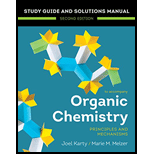
Concept explainers
(a)
Interpretation:
The name of the sugar, that fits the given description, is to be written.
Concept introduction:
Epimers are the stereoisomers which differ in stereochemical configuration at ONLY ONE carbon atom. D-sugar and L sugar are distinguished by the position of the
(b)
Interpretation:
The name of the sugar, that fits the given description, is to be written
Concept introduction:
Epimers are the stereoisomers which differ in the stereochemical configuration at ONLY ONE carbon atom. D-sugar and L sugar are distinguished by the position of the
(c)
Interpretation:
The name of the sugar, that fits the given description, is to be written
Concept introduction:
Epimers are the stereoisomers which differ in the stereochemical configuration at ONLY ONE carbon atom. D-sugar and L sugar are distinguished by the position of the
(d)
Interpretation:
The name of the sugar, that fits the given description, is to be written
Concept introduction:
Epimers are the stereoisomers which differ in the stereochemical configuration at ONLY ONE carbon atom. D-sugar and L sugar are distinguished by the position of the
Want to see the full answer?
Check out a sample textbook solution
Chapter 5 Solutions
Organic Chemistry: Principles And Mechanisms: Study Guide/solutions Manual (second)
- (h) Identify B-D-altrose and a-D-altrose from the monosaccharides shown below. VI I CH2OH O. CH2OH II H V ОН, IV H III OH OH H (i) The monosaccharide below is a(n) (d-aldopentose, R-aldopentose, S- aldopentose, L-aldopentose, D-aldopentose).arrow_forwardLactose is a disaccharide in which a glycosidic linkage connects the monosaccharides galactose and glucose. OH НО OH (a) Identify the glycosidic linkage and the acetal carbon in lactose. (b) What type of glycosidic linkage does lactose have (i.e., is it 1,1'-, 1,2'-, etc., and is it a or B)? (c) People who are lactose intolerant are deficient in the enzyme lactase, and therefore cannot efficiently break down the disaccharide into its monosaccharides. When lactose is treated with aqueous acid, however, this hydrolysis can take place, though relatively slowly. Draw the complete, detailed mechanism and the products of the acid-catalyzed hydrolysis of lactose. Но ОН НО ОН ОН Lactosearrow_forwardProvide suitable responses for questions (a) –(j).| 6 CH2OH 4 ОН OH OH 2.arrow_forward
- Draw the cyclic hemiacetal forms of d-mannose and d-galactose both as chair conformations and as Haworth projections. Mannose is the C2 epimer of glucose, and galactoseis the C4 epimer of glucose.arrow_forwardm) Which pyranose ring (A, B, C, or D) in the tetrasaccharide below is derived from D-altrose? The Fischer projections for the four aldohexoses that make up this tetrasaccharide are shown below. B C D HOH CHO CHO CHO CHO HO+H HTOH Fонно н HOH HOH H-OH H-OH H-+-OH H-TOHHOH HOH H+OH HOHнтон нон CHOH CHOH CHOH CHOH De D-glue Dalose Datrone i NH Į HOH STEP 1 OH, HO- answer 1. Just add arrows and charges for steps 1, 2, and 3 in formation of this enamine з no arrows needed here OH н Н ЮН -OH STEP 3 :ÖH н H STEP 2 на это про за почarrow_forward4. Identify the component monosaccharides of each of the following compounds and describe the type of glycosidic linkage in each. Но он Но OH HO он Но- Но- (a) OH (c) CH,OHO. (b) CH2OHO Lon OH HO H ČHOH H OH ÓH ОНarrow_forward
- 5. Provide suitable responses for questions (a) – (). 6 CH2OH 4 OH OH 3 OH (a) What is the relative configuration of the above monosaccharide? (b) Which labeled carbon is the anomeric carbon? (c) Trace and identify the acetal in the above monosaccharide. (d) Draw the hemiacetal that results from above acetal. (e) Draw the open chain equivalent of the sugar in part (d). (f) Classify the monosaccharide below as a D-sugar or an L-sugar. H. OH O. OH CH,OH OH OHarrow_forward(d) Draw the structure of the expected product when monosaccharide B undergo mutarotation upon dissolving in water in the presence of Tollens reagent (AGNO3, NHẠOH). он OH O. OH OH OH monosaccharide Barrow_forwardThe anticoagulant heparin is a polysaccharide that contains alternating residues of -D- glucuronic acid-6- sulfate and N-sulfo-D-glucosamine-6sulfate connected by (1 B 4)- glycosidic linkages. Draw a part of heparin that shows one each of the two residues.arrow_forward
- Draw the isomers for each aldotetrose and ketopentose in the figure below and designate each isomer as a D or L sugar and designate also the R and S in every chiral centers. Label the enantiomers and diastereomers respectively. CH,OH C=0 Н—С—ОН Н-С—ОН Н—С—ОН H-C-OH ČH,OH ČH,OHarrow_forwardGlucose is the most abundant monosaccharide. From memory, draw glucose in(a) the Fischer projection of the open chain.(b) the most stable chair conformation of the most stable pyranose anomer.(c) the Haworth projection of the most stable pyranose anomerarrow_forwardWhich of the following monosaccharides gives optically inactive alditols on reduction with D-Glucose; L-Galactose D-Allose; D-Galactose L-Talose; D-Allose D-Altrose; D-Galactose NaBH,arrow_forward

 Introduction to General, Organic and BiochemistryChemistryISBN:9781285869759Author:Frederick A. Bettelheim, William H. Brown, Mary K. Campbell, Shawn O. Farrell, Omar TorresPublisher:Cengage Learning
Introduction to General, Organic and BiochemistryChemistryISBN:9781285869759Author:Frederick A. Bettelheim, William H. Brown, Mary K. Campbell, Shawn O. Farrell, Omar TorresPublisher:Cengage Learning Organic Chemistry: A Guided InquiryChemistryISBN:9780618974122Author:Andrei StraumanisPublisher:Cengage Learning
Organic Chemistry: A Guided InquiryChemistryISBN:9780618974122Author:Andrei StraumanisPublisher:Cengage Learning


